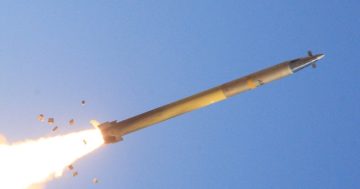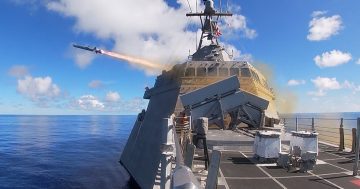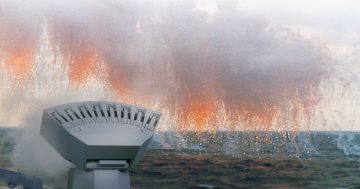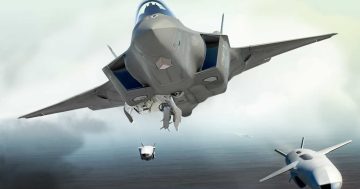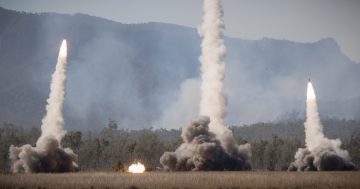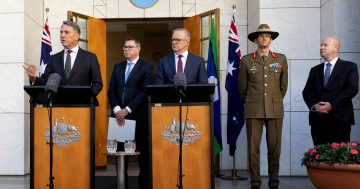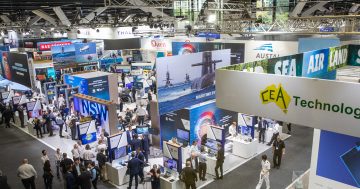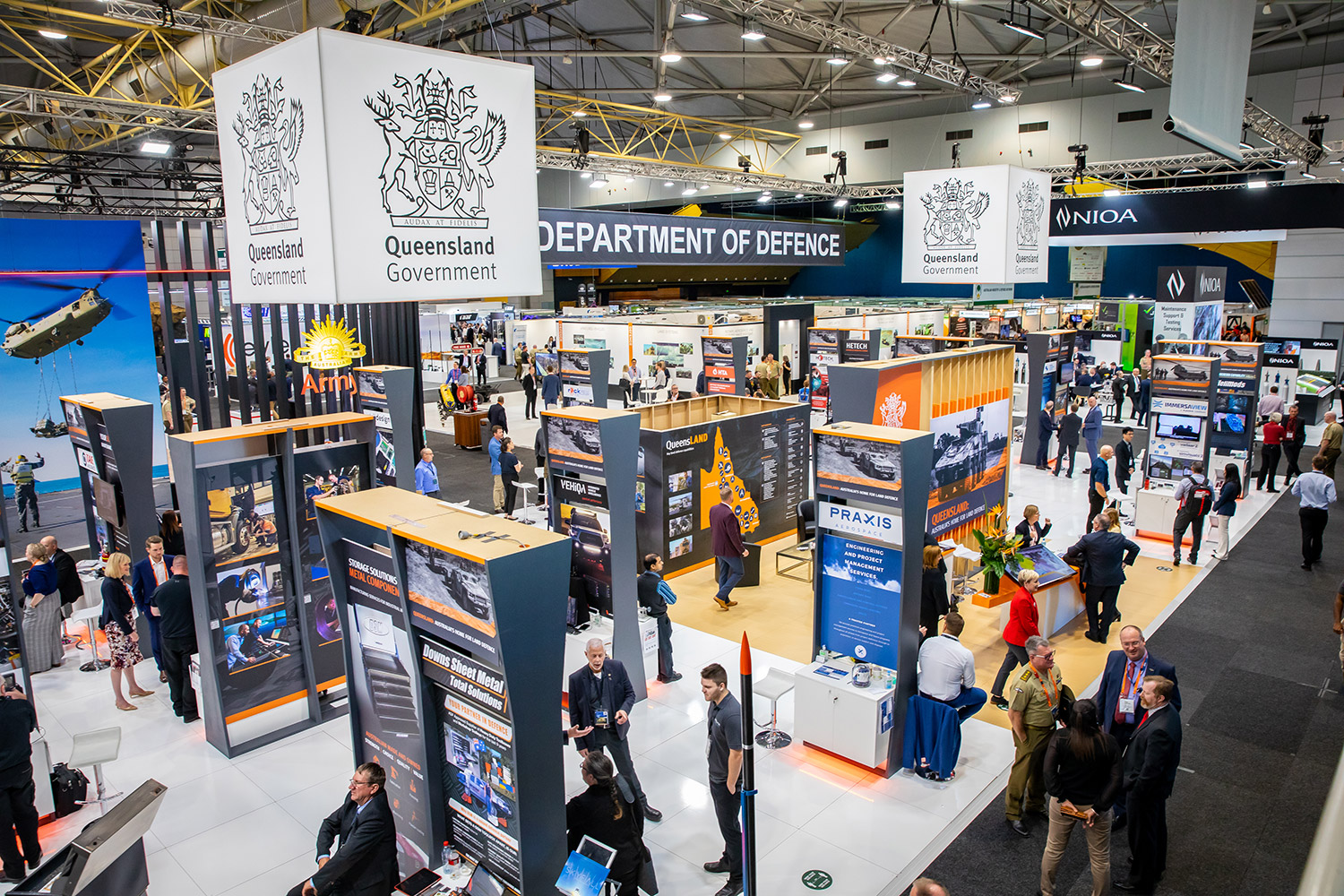
The government looks favourably at Australian industry participation. Photo: AMDA Foundation.
The 2022 Land Forces International Land Exposition and Conference wrapped up on 6 October in Brisbane.
The biennial three-day networking and exhibition event brings together many of the world’s and Australia’s largest arms manufacturers, their Australian Defence Force and international customer base, and numerous Australian small-to-medium enterprises (SMEs) and industry bodies.
Regular attendees of this and the equivalent Indo-Pacific naval and Avalon air show exhibitions have come to expect demonstrators to present at some point, and this year they were not disappointed.
If you were given a ‘bingo card’ of insults which included “baby killer”, “warmonger”, “murderer”, or “gun-runner” being hurled at you as you navigated the entrance, you could be assured of ticking most or all of them off before even getting to the back of the security queue, not to mention the numerous unpublishable expletives liberally interspersed in between.
I have occasionally questioned my participation in this industry and have even had to self-rationalise by choosing to avoid some companies, people, or aspects of it. So, to a point, I can somewhat empathise with the demonstrators’ intent while respecting their passion and right to demonstrate. But the methods employed by this and most other groups at these events are unlikely to convince anyone to question their attendance. Instead, they primarily draw contempt and ridicule.
Anyway, once inside, the overall messaging quickly became clear – sovereign capability. Despite most of the large companies being US or European-based multi-nationals, many appear to have heeded the previous government’s relentless messaging that their products will be more favourably considered if they can either be manufactured and sustained in Australia or at least incorporate Australian-made components or design elements.
The definition of ‘sovereign capability’ is a somewhat contentious one. Some see it as meaning the capability will be wholly Australian-designed, developed and built, with most or all profits staying in-country. Others accept that, while the design might be imported and the profits eventually head back offshore, the incorporation and possible export of Australian-made components, the assembly or manufacture of the capability by an Australian workforce, and the broader community ecosystem the workforce supports will sufficiently meet the standard.
But even in the two-and-a-half years since the Morrison government launched its sovereign capability agenda, the world has changed, and not for the better.
The war in Ukraine and increased uncertainty in the Indo-Pacific region mean analysts predict that any potential future conflict Australia could be drawn into will likely occur within the next decade. Therefore, the focus is swinging back from developing a sovereign industry to one of, ‘what do we need now, and how soon can we get it?’
To their credit, the previous and new governments both appear to have recognised this rapid geopolitical shift. Within two months of the election, the new government launched a Defence Strategic Review to be led by former Defence and Foreign Minister Stephen Smith and former Defence Chief Air Chief Marshal (Ret’d) Sir Angus Houston.
Due to report next March, funding for some long-running programs such as infantry fighting vehicles and shipbuilding will likely take a backseat to more urgent requirements such as long-range strike missiles and an integrated air and missile defence (IAMD) system, and perhaps interim submarines, which may be accelerated.
But sovereign capability can’t be established quickly. It requires years or even decades of investment, workforce and facility development, and technology transfer to build it up. So it will be a difficult balancing act for the defence industry and future governments to continue down this path while also funding the required short-notice capabilities the review will undoubtedly identify.












